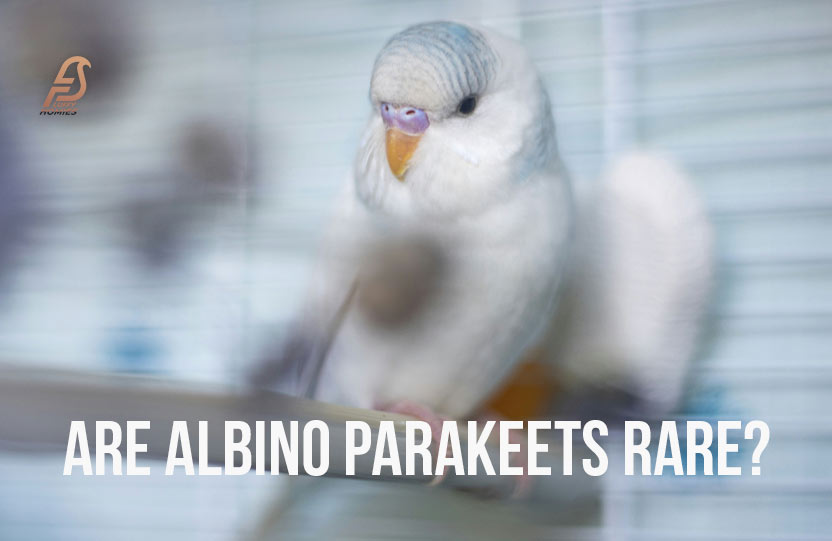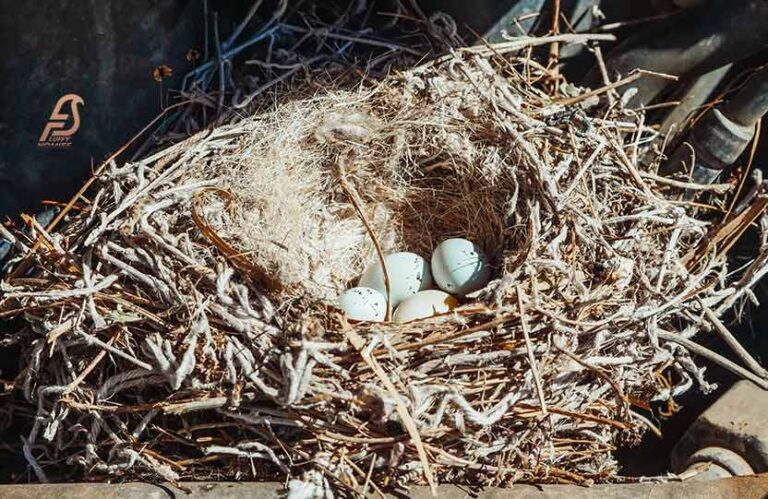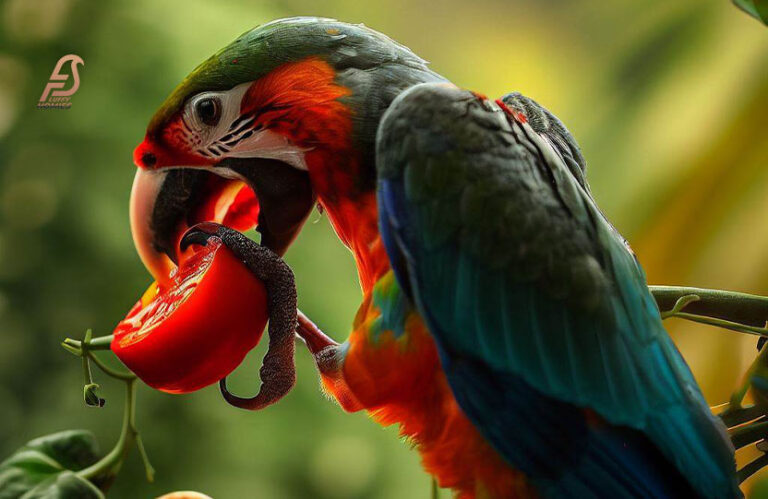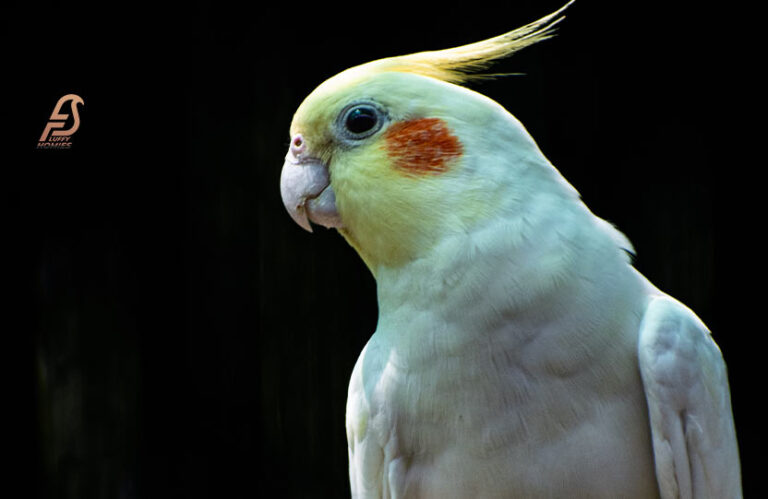Are Albino Parakeets Rare? (Let’s Find Out in 2024)
Because of their unusual genetic composition and spectacular appearance, albino parakeets have long captivated birdwatchers.
The feathers of these colorful birds are stunning white or pale yellow due to the lack of pigmentation, while their eyes are a startling pink or red. Thus, it’s reasonable for those who enjoy birds to ask: how rare are albino parakeets (budgies)?
One of the things that makes albino parakeets so special is how rare they are. The precise population size of albino parakeets is difficult to pin down, although these birds are among the most unusual in the bird kingdom.
The albinism-causing genetic mutation happens infrequently and is uncommon in parakeet populations, which explains why these birds are so rare.
Birdwatchers and collectors alike typically covet albino parakeets for this reason. Although they are unlike any other bird, albino parakeets nevertheless need special attention from their keepers if they are to flourish in captivity.
All About the Albino Parakeet (Budgie)
An intriguing subtype of parakeets is albino parakeets. Albino parakeets stand out from the crowd because of their brilliant red eyes and distinctive lack of pigmentation. Their feathers are a stunning shade of white.
Birds with this pigmentation deficiency have a genetic defect that stops them from making melanin, the pigment that gives skin, feathers, and eyes their color.
Because of this, albino parakeets like purple budgies are devoid of any coloration whatsoever and appear entirely white.
Not only do albino parakeets look different from their pigmented relatives, but they also act differently. These birds are more easily startled and have a heightened sensitivity to light.
Because their iris does not contain melanin, their red eyes are more easily damaged by ultraviolet light.
So, albino parakeets need our utmost attention to make sure they stay healthy. To properly care for these fascinating birds, it is vital to understand their specific requirements and traits.
Are Albino Parakeets Rare?
Within the parrot community, albino parakeets are thought to be rather unusual. The albinism of these birds is caused by a genetic abnormality, which explains their rarity like black face budgies.
Albino parakeets are devoid of melanin, the pigment that gives feathers their color, in contrast to their typically colored relatives.
Their feathers seem white or pale yellow and their eyes are sometimes crimson or pink because of this, which makes them look drastically different. Albino parakeets are in great demand among collectors and bird aficionados for their striking look.
Also Check: Albino Macaw: Complete Information

Care Requirements of Alboni Parakeets
Just like every other kind of pet bird, albino parakeets need lots of love and attention to flourish when kept as pets. For the sake of their emotional and physical health, these one-of-a-kind birds require a clean and large cage.
The parakeet needs room to fly around in, as well as a place to sit, eat, and drink from its food and water bowls. To avoid escapes or unintentional injuries, consider a cage crafted from a strong material like wrought iron or stainless steel.
Furthermore, albino parakeets need healthy, well-balanced food to be active and healthy. To ensure they obtain all the vitamins and minerals they need, their food should include a wide variety of plants, including fruits like guava, seeds such as sunflower seeds, vegetables like kale, and pellets.
Always have a supply of clean water on hand; changing the water every day will keep it that way. To promote cognitive development, it’s helpful to switch up playthings, allow chances for foraging, and foster socialization.
Encouraging supervised free flight time in a controlled setting or making use of a bird-safe play area are also great ways to get your bird some exercise outside of its cage regularly.
Health Issues of Albino Parakeets
Similar to all living beings, albino parakeets might experience certain health problems like obesity that can necessitate extra care.
Since albino parakeets are photosensitive, this might be a problem. Sunburn is a common problem for albino parakeets because they do not produce enough melanin, the pigment that shields the skin from the sun’s dangerous ultraviolet (UV) radiation.
In extreme circumstances, this might cause skin cancer and painful blisters. Owners must make sure that these fragile birds are shielded from the sun and have enough shade.
Albino parakeets may also have trouble seeing well. Reduced visual acuity or total blindness can be the outcome of albinism’s effects on eye development.
Because of potential issues with precise vision, albino parakeets may have trouble navigating their environment and interacting with other birds.
When designing a comfortable and interesting environment for their albino parakeets, owners should keep this in mind. It can be good for their health to provide them with toys and perches that they can recognize by other senses, such as touch or sound.
To keep an eye on their eye health and catch any problems early, it’s best to take them in for regular veterinarian exams.
Albino parakeets are rare in part because they are notoriously difficult to reproduce. Albinism can only be handed down by a specific mutation that is present in both parents of the bird species.
Albino parakeets can only be created by carefully selecting birds that already have the albino gene and then mating them together.
Furthermore, breeders must guarantee that albino parakeets receive specialized care to keep them healthy, as these birds are more prone to certain health conditions, such as photosensitivity and eye difficulties. Because of these reasons, albino parakeets are extremely rare and much sought after by bird enthusiasts.
Spot the Difference Between a Male and Female Albino Budgie
You can tell a male albino budgie from a female by looking for some telltale signs like anthracite budgies. Even while these characteristics aren’t foolproof, they can help you identify the gender of the bird.
Among the most important characteristics to think about is the cere, the fleshy region above the beak. The cere of a male albino budgie is sometimes a dark blue or purple hue, but that of a female is more often a pale pink or even brownish hue.
The color of the cere can change somewhat as the bird ages due to hormonal fluctuations, so keep that in mind.
Furthermore, there might be differences in the general size and form of the body between sexes; for example, men tend to be bigger and stronger than women.
Observing the behavior of albino budgies is another technique to tell them apart. Although there are exceptions, male budgies are more likely to be loud and show a greater variety of vocalizations than females.
When courting a possible mate, males may do things like sing, bobble their heads, and even regurgitate food. When budgies are in breeding condition, the females tend to be more reserved and attentive to the nesting and care of the eggs.
Always remember that budgies are one-of-a-kind creatures with their distinct characteristics. Albino budgies can’t have their gender determined by looking at just one trait; rather, you need to take into account some other things.
Also Check: Why Won’t My Parakeet Drink Water?
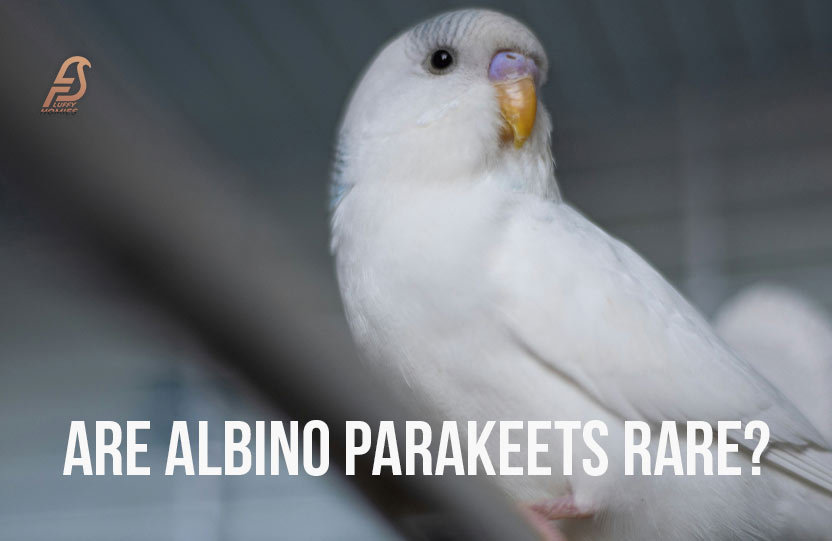
What is the Reason Behind Parakeet Albinism?
Parakeet albinism is mostly caused by a mutation in the gene that controls the synthesis of melanin, the pigment that gives feathers their color.
Tyrosinase is an enzyme essential for melanin formation; when it is absent or inadequate, this mutation takes place.
Parakeets affected with albinism are easily identifiable due to the absence of pigmentation in their feathers, beaks, and eyes. Albinism is a recessive trait, thus for it to manifest in a bird’s progeny, it must be carried by both parents.
There is still a lack of consensus on what causes albinism in parakeets. It is thought, however, to have several causes, one of which is heredity.
It is possible to pass on some mutations from one generation to another; for example, the albinism mutation. The expression of albinism can also be influenced by environmental factors, such as exposure to toxic substances or chemicals while the embryo is still developing.
Even while we don’t yet know for sure what causes albinism in parakeets, what we do know points to a mix of hereditary and environmental variables.
Is Albinism a Sign in Your Parakeet?
Parakeets can be born without pigmentation in their feathers, skin, or eyes due to a hereditary disorder called albinism. Knowing the signs of albinism in parakeets is crucial.
There is a defining feature that is their general look. Albino parakeets are characterized by their completely pigment-free plumage, which is very light or white.
They lack melanin, the pigment that gives eyes their color, hence their eyes usually seem red or pink. Furthermore, they could seem pale or even see-through due to a lack of pigmentation in their beak and feet.
Parakeets might seem colorless without really having albinism; this is because other genetic abnormalities can cause similar appearances in parakeets.
It is advised that you take your parakeet to a specialist who specializes in avian genetics for a genetic test to check if it is indeed albino.
When trying to diagnose albinism in your parakeet, it’s important to look at how they act and how sensitive they are to light.
Compared to their pigmented relatives, albino parakeets are more easily startled by intense light. Examples of behaviors they could display include squinting, avoiding bright sunshine, or blinking excessively.
Sunburn and skin damage are more likely to occur in albino parakeets since they do not have any pigmentation in their feathers or skin to protect them.
Ensuring they have access to a secure and pleasant environment that suits their individual needs is of utmost importance, as is providing them with adequate shade.
Can Albino Parakeets Breed?
Albino parakeets are capable of reproducing; however, their genetic composition poses difficulties in the reproductive process.
Albino parakeets, which are distinguished by their scarlet or pink irises due to a genetic disorder caused by the “Ino” mutation, possess a distinct pigmentation.
However, the reproduction process for these organisms becomes complicated because the Ino mutation presents unique genetic obstacles.
The mating of two albino parakeets increases the probability that their progeny will be affected by genetic disorders, including diminished viability and health complications.
Breeding programs frequently necessitate meticulous deliberation and administration to safeguard the welfare of the progeny.
Breeders may, on occasion, elect to introduce additional color variants to preserve genetic diversity and mitigate the potential health hazards.
Albino parakeets are capable of reproducing despite the obstacles they face; however, it is imperative to adhere to responsible reproduction protocols to effectively manage the distinctive genetic factors linked to the Ino mutation.
Albino Parakeets for Sale
Rare and coveted by birdwatchers everywhere, albino parakeets stand out with their brilliant white plumage and vibrant red or pink eyes.
Their uncommon appearance and scarcity make them a sought-after option for anyone seeking to accentuate their aviary with a personal touch.
Albino parakeets are wonderful companions for people of all bird-owning experience levels due to their amiable and inquisitive personality.
But it could be difficult to find albino parakeets for sale because they are so rare. These elusive birds are not often sold in pet stores or online, so you’ll need to be patient and persistent if you want to find one.
Albino Parakeets Price
Among birdwatchers, albino parakeets stand out due to their unusual look that makes budgies expensive. Consequently, there is now interest in the albino parakeet pricing.
Quite a few variables influence the final price of these birds. To begin, albino parakeets are rather expensive due to their rarity.
Albino parakeets have a genetic mutation that makes them far rarer than their non-albino relatives. Their worth in the market is driven up by their scarcity.
The price might also be affected by the breeder’s reputation and the bird’s age and condition. Albino parakeet prices can vary widely, therefore it’s important to think about these things before you buy one.
Albino parakeets may be purchased for a variety of rates. Compared to ordinary parakeets, albino parakeets often cost a bit more.
Many factors determine how much an albino parakeet might cost; however, it can be anywhere from $150 to $500 or more.
Considerations including the bird’s age, health, attractiveness, and family history all go into its price. If an albino parakeet has extraordinary coloring or traits, or if it comes from a reputable breeder, its price could be greater.
Some vendors may try to take advantage of the desire for albino parakeets by charging exorbitant rates, so it’s important to be sure the bird’s price is reasonable and the breeder is trustworthy.
Also Check: How Much Does a Macaw Cost?
Final Thoughts: Are Albino budgies Rare?
Due to the unusual “Ino” genetic mutation, which causes albino parakeets to lack pigmentation and have red or pink eyes, these birds are extremely rare.
Only 18% of birds display such variants, which is much rarer when seen in the larger context of avian pigmentation aberrations.
True albino parakeets are already rare among parrot species, and the current breeding procedures that aim to improve certain characteristics have only made the situation worse.
Albino parakeets are unique among the many bird species, and we may better appreciate their uniqueness if we learn about the genetic reasons and breeding dynamics that cause their rarity.
Frequently Asked Questions
The pigment melanin is responsible for pigmentation in birds, and albinos are quite rare since they do not have any. Albinos are a unique and unusual phenomenon in nature since this genetic mutation happens very seldom in bird populations.
True albino parakeets are regarded as the rarest coloration; they are the product of the “Ino” genetic mutation. True albino parakeets are uncommon among parrot species and lack pigmentation; their irises are either red or pink.
White parakeets, often called albinos or leucistic, are extremely rare because of a genetic abnormality that makes them pigmentless. Because they are so rare compared to their colorful relatives, these birds stand out with their mostly white plumage.
Twenty to fifty dollars is a reasonable price range for a white parakeet. Factors including the breed, age, and breeder of the bird might affect this cost. The general condition and unique traits of the bird might also affect its price.
